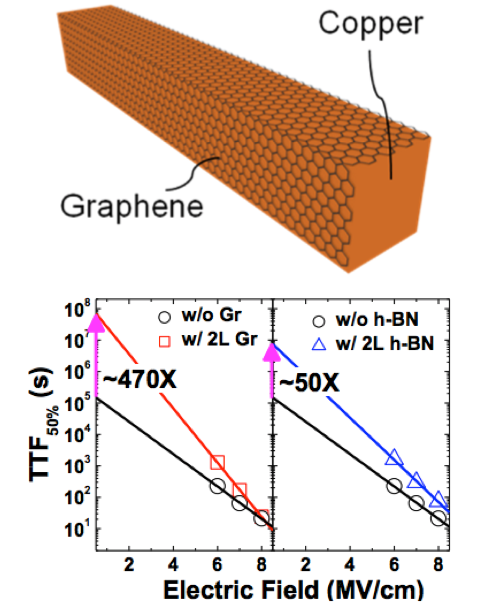Research
Research » 2D Materials » Hybrid Interconnect
In Cu interconnect tenchnology, a diffusion barrier is required to reduce Cu diffusion. Due to their atomically thin nature, 2D materials have the potential to be used as ultra-thin diffusion barrier for next-generation interconnect technologies and form Cu/2D material hybrid interconnects. We study the properties of 2D materials as Cu diffusion barrier and the following are some highlights on the topic.
Diffusion Barrier Properties and Resistivity of Cu/2D Material Hybrid Interconnects
The immunity to Cu diffusion and the reduction in the surface scattering of Cu/2D hybrid interconnects were studied by time-dependent dielectric breakdown (TDDB) and four-probe resistance measurements, respectively. TDDB measurements show superior diffusion barrier properties of 2D layered materials (graphene and h-BN), where a > 50X device lifetime improvement is observed. On the other hand, the resistivity of ultra-thin Cu wires can be reduced by ~40% when 2D layered materials (MoS2 or WSe2) are inserted in-between Cu and SiO2/Si substrate, indicating the suppression of the surface scattering. The results demonstrate the promising potentials of using 2D layered materials as the diffusion barrier for Cu interconnects. (see IEEE DRC Digest (2017)).
Authors: Chun-li Lo, Shengjiao Zhang, Tingting Shen
©2017 IEEE. Pictures reprinted with permission from IEEE DRC Digest (2017). DOI: 10.1109/DRC.2017.7999485


